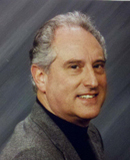Dystonia Treatment
Treatment of dystonia has been limited to minimizing the symptoms of the disorder.
To reduce the types of movements some try to get plenty of rest, do moderate exercises and utilize relaxation techniques. Various treatments focus on separating brain functions or blocking nerve communications with the muscles via drugs, neuro suppression or denervation. These treatment options can have negative side effects and risks.
Physical Intervention
Physical therapy can sometimes help with focal dystonia. A structured set of exercises is tailored to help the affected area. Some focal dystonias have been treatable through movement retraining in the Taubman Approach, particularly in the case of musicians.
However other focal dystonias may not respond and may even be made worse by this type of treatment.
Injections
Injections into affected muscles have proved quite successful in providing
some relief for around 3 – 6 months, depending on the kind of dystonia. Injections have the advantage of ready availability (the same form used in cosmetic surgery) and the effects are not permanent. There is a risk of temporary paralysis in them. The injections have to be repeated as the effects wear off and some recipients may develop immunity to the drug used in the injections.
Surgery
Surgery, such as the denervation of selected muscles, may also provide some relief.
However, the destruction of nerves in the limbs or brain is not reversible and should only be used in the most extreme cases. Recently the procedure of Deep Brain Stimulation (DBS) has proven successful in a number of cases of severe Generalized Dystonia.
Nutritional Support
I am offering a possible solution with nutrition. Over 20 years ago, I was diagnosed with focal eyelid dystonia, also called Blepharospasm. I followed a whole food and nutritional supplement program that nourished my brain and body. My dystonia symptoms have diminished dramatically. Maybe this nutritional program could help you, too.
To reduce the types of movements some try to get plenty of rest, do moderate exercises and utilize relaxation techniques. Various treatments focus on separating brain functions or blocking nerve communications with the muscles via drugs, neuro suppression or denervation. These treatment options can have negative side effects and risks.
Physical Intervention
Physical therapy can sometimes help with focal dystonia. A structured set of exercises is tailored to help the affected area. Some focal dystonias have been treatable through movement retraining in the Taubman Approach, particularly in the case of musicians.
However other focal dystonias may not respond and may even be made worse by this type of treatment.
Injections
Injections into affected muscles have proved quite successful in providing
some relief for around 3 – 6 months, depending on the kind of dystonia. Injections have the advantage of ready availability (the same form used in cosmetic surgery) and the effects are not permanent. There is a risk of temporary paralysis in them. The injections have to be repeated as the effects wear off and some recipients may develop immunity to the drug used in the injections.
Surgery
Surgery, such as the denervation of selected muscles, may also provide some relief.
However, the destruction of nerves in the limbs or brain is not reversible and should only be used in the most extreme cases. Recently the procedure of Deep Brain Stimulation (DBS) has proven successful in a number of cases of severe Generalized Dystonia.
Nutritional Support
I am offering a possible solution with nutrition. Over 20 years ago, I was diagnosed with focal eyelid dystonia, also called Blepharospasm. I followed a whole food and nutritional supplement program that nourished my brain and body. My dystonia symptoms have diminished dramatically. Maybe this nutritional program could help you, too.
Get Help for Your Dystonia
 Steve Zarren, President
Feel Better LLC
Steve Zarren, President
Feel Better LLC
If you have dystonia, or know someone who does, give me a call.
I will share with you about how I am helping people improve their quality of life. My phone number is (410) 486-2525 or (410) 790-9606 cell phone. Call between 9:00 AM and 8:00 PM EST, seven days a week or fill out my free no obligation consultation form.
To read testimonials, click here.